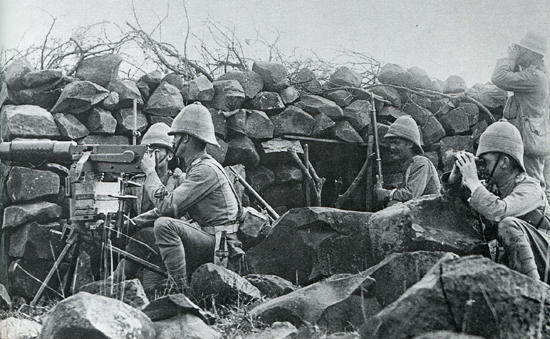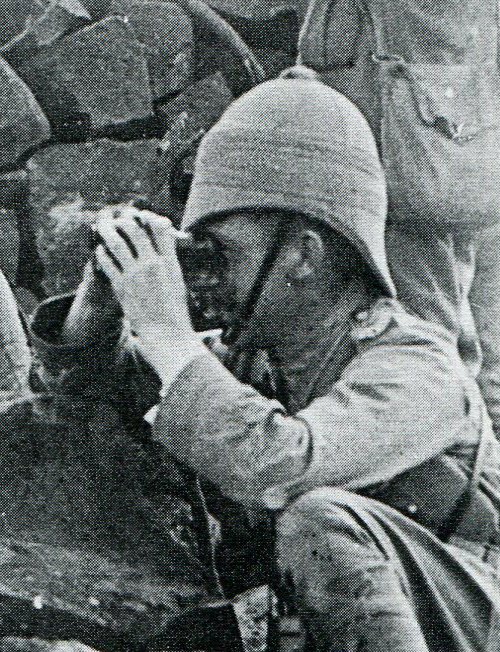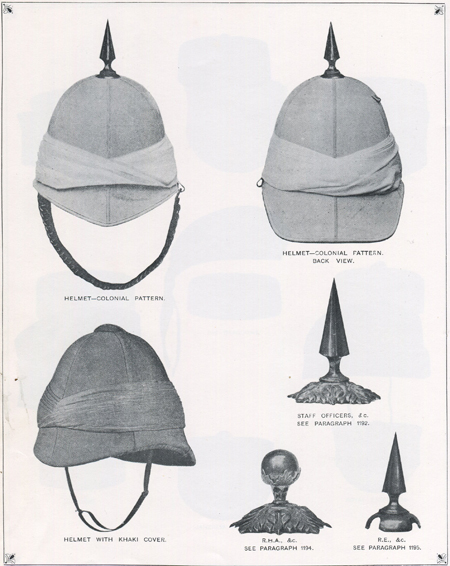Over the years of the Colonial Pattern Foreign Service Helmet there were many variations in style; by era, by construction material and by manufacturer. In the latter days of the 19th Century no style was more pronounced, nor more impractical than the so-called “smart” helmet.
The “normal” version of the helmet was already widely criticised because of its lack of sun protection to the temples and because of the difficulty presented by the steep peak and nape in firing rifles in the prone position. The “smart” helmet exacerbated these characteristics to a marked degree but were thought by the officers and regiments who adopted them to be sartorially far more elegant.
This style of helmet was first remarked upon in the 1900 Dress Regulations for the Army where it warned of “smart” helmets and that the sealed pattern be strictly adhered to.
It is interesting to note that the “m” in “smart” is set upside down. Someone apparently had a cheeky sense of humour that was not picked up by the authorities.
Stuart Bates




